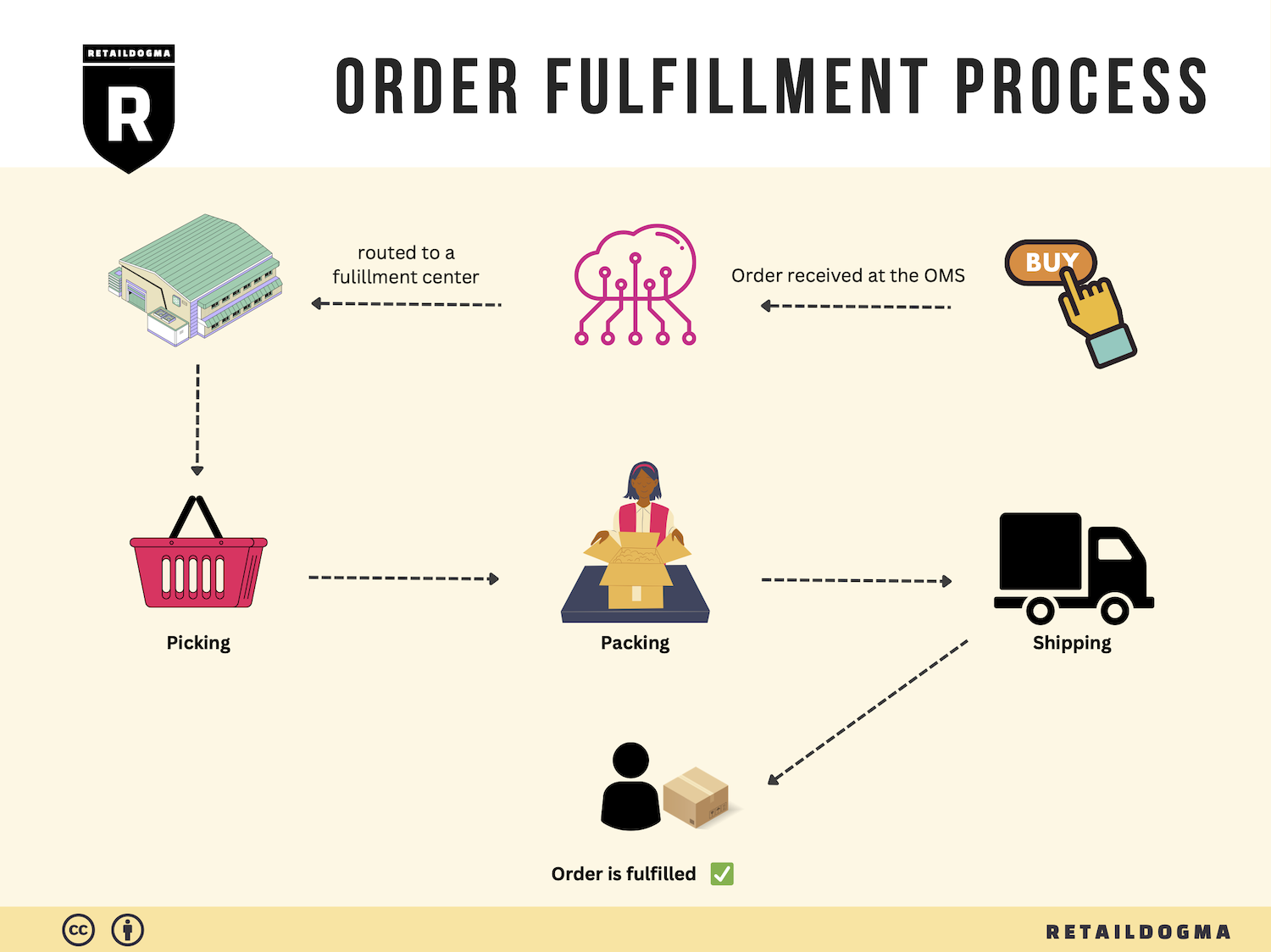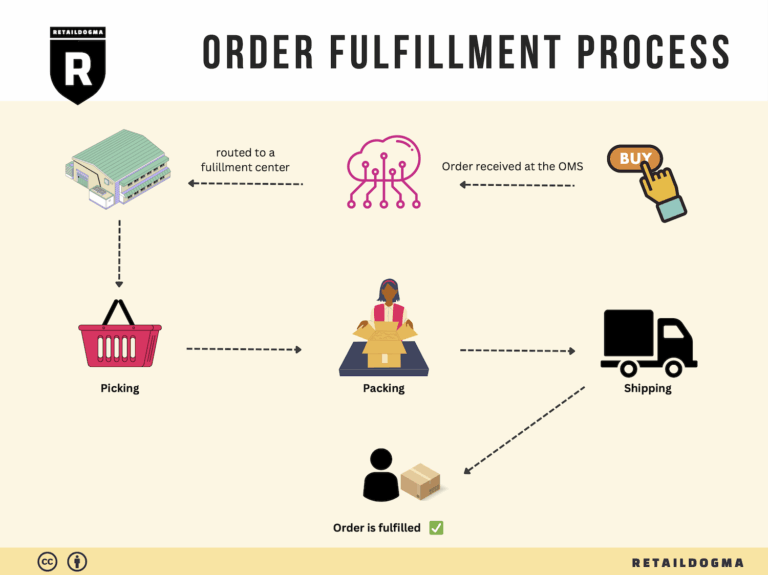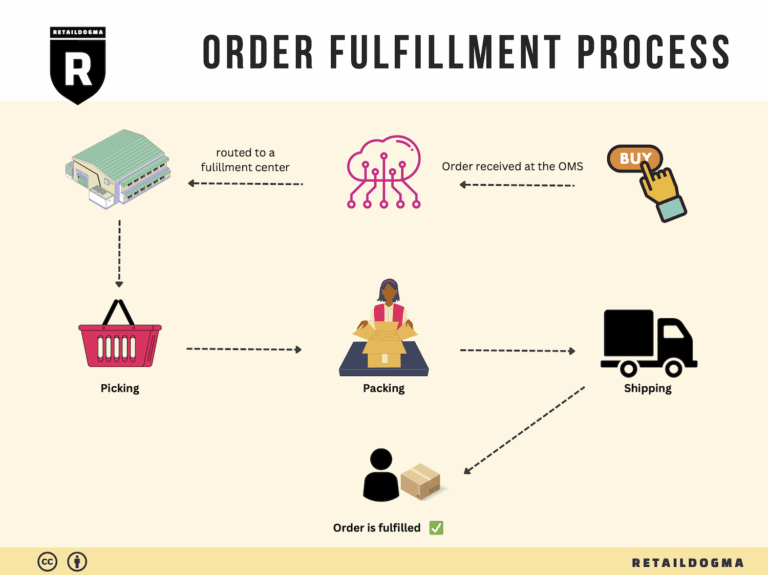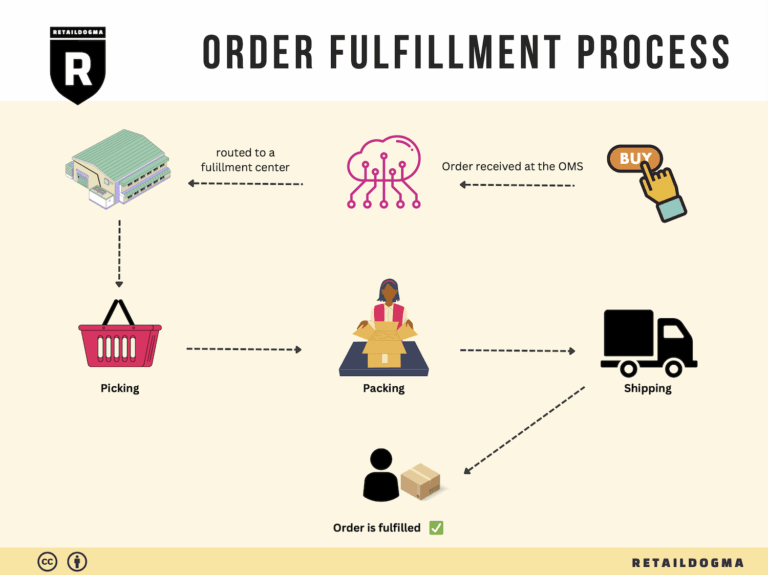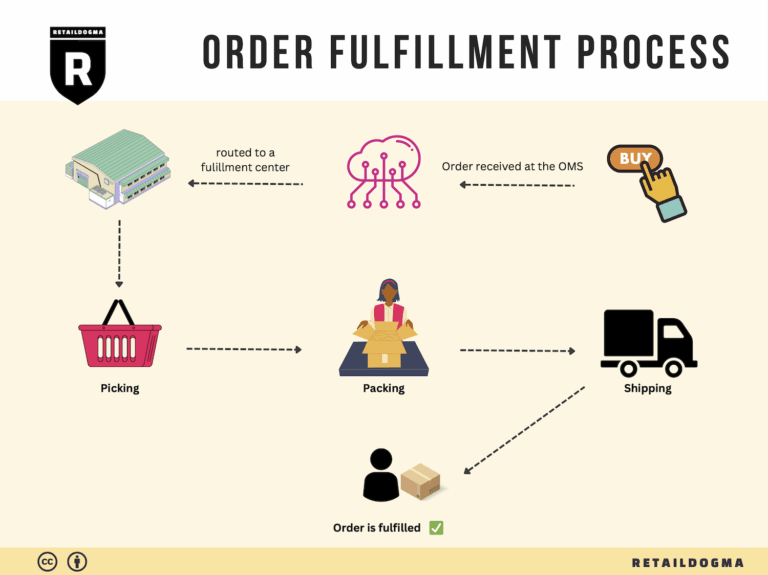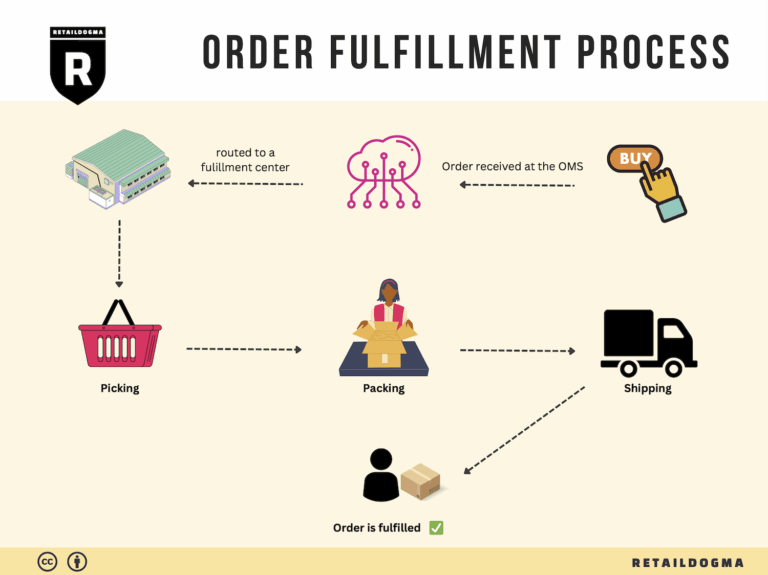How Order Fulfillment Works: A Step-by-Step Guide for Businesses
What is E-commerce Fulfillment? An Introduction for Growing Businesses
Understanding the Challenges of E-commerce Fulfillment
As your e-commerce business begins to grow, the excitement of increasing sales can quickly turn into a daunting challenge: managing the logistics of packing and shipping orders. Many entrepreneurs find themselves overwhelmed by the sheer volume of orders, the complexities of inventory management, and the need to meet customer expectations for timely delivery. This is where effective e-commerce fulfillment comes into play.
At its core, fulfillment is the process of getting a product from your warehouse to your customer’s doorstep. It encompasses everything from receiving inventory and storing it, to picking, packing, and shipping orders. For growing businesses, mastering this process is crucial, not only for customer satisfaction but also for maintaining operational efficiency.
What This Guide Covers
In this guide, we’ll explore various fulfillment models that can support your growing business, including Third-Party Logistics (3PL) and Fulfillment by Amazon (FBA). Each model has its own advantages, and understanding these will help you select the best fit for your operations.
We will delve into the core services essential to effective fulfillment, such as inventory management, order processing, shipping logistics, and returns handling. Furthermore, we’ll provide practical advice on how to choose the right fulfillment partner, focusing on key criteria such as technology integration, scalability, and customer support.
Pricing is another critical aspect we will cover. Understanding the cost structures associated with different fulfillment options will empower you to make informed financial decisions that align with your business goals.
Empowering Smart Logistics Decisions
Our goal with this guide is to equip you with the knowledge and tools necessary to navigate the complexities of e-commerce fulfillment confidently. By understanding the various options available and how they can be tailored to your unique business needs, you can streamline your operations, enhance customer satisfaction, and ultimately drive growth. As you read on, you will gain insights that will enable you to make strategic choices about your logistics, setting the stage for sustained success in the competitive e-commerce landscape.
What You’ll Learn In This Guide
- What is E-commerce Fulfillment? An Introduction for Growing Businesses
- The Order Fulfillment Process: From ‘Buy’ Button to Customer’s Door
- Comparing Fulfillment Models: In-House vs. 3PL vs. Dropshipping
- A Deep Dive into Amazon FBA: Pros, Cons, and Who It’s For
- Core Services Offered by Fulfillment Centers
- How to Choose a Fulfillment Partner: A 6-Point Checklist
- Understanding Fulfillment Pricing: A Breakdown of Common Fees
- Frequently Asked Questions (FAQs) about Fulfillment
- Conclusion: Is Outsourcing Fulfillment the Right Move for Your Business?
- Important Disclaimer
The Order Fulfillment Process: From ‘Buy’ Button to Customer’s Door
1. Receiving Inventory
The order fulfillment process begins with receiving inventory from suppliers or manufacturers. During this stage, shipments are carefully checked against purchase orders to ensure accuracy. Key terms associated with this step include SKU (Stock Keeping Unit), which is a unique identifier for each product, helping in tracking and inventory management.
Receiving inventory is crucial because it sets the foundation for an efficient fulfillment process. Any discrepancies at this stage, such as missing items or incorrect quantities, can lead to complications later on. Establishing a robust receiving process helps maintain inventory accuracy, which directly impacts order fulfillment rates and customer satisfaction.
2. Warehouse Storage
Once the inventory has been received and verified, it is then moved to designated storage areas within the warehouse. Efficient warehouse storage involves organizing products in a manner that optimizes space and accessibility. Key terms for this stage include bin locations, which are specific spots in the warehouse where products are stored.
Effective warehouse storage is important for several reasons. First, it allows for quick access to items during the picking process, reducing the time taken to fulfill orders. Additionally, proper organization minimizes the risk of stockouts and overstock situations, ensuring that inventory levels are balanced. An organized warehouse also contributes to better inventory tracking and management, enabling businesses to make informed decisions about reordering and product lines.
3. Order Picking
Order picking is the process of retrieving items from the warehouse to fulfill customer orders. This step typically involves generating a pick list, which outlines the items and quantities needed for each order. There are various picking methods, including single order picking, batch picking, and zone picking, each with its advantages depending on the order volume and warehouse layout.
This stage is vital as it directly affects the accuracy and speed of order fulfillment. Efficient order picking reduces the likelihood of errors, such as sending the wrong items or incorrect quantities, which can lead to increased return rates and customer dissatisfaction. By streamlining the picking process, businesses can improve overall efficiency, leading to faster delivery times and enhanced customer experiences.
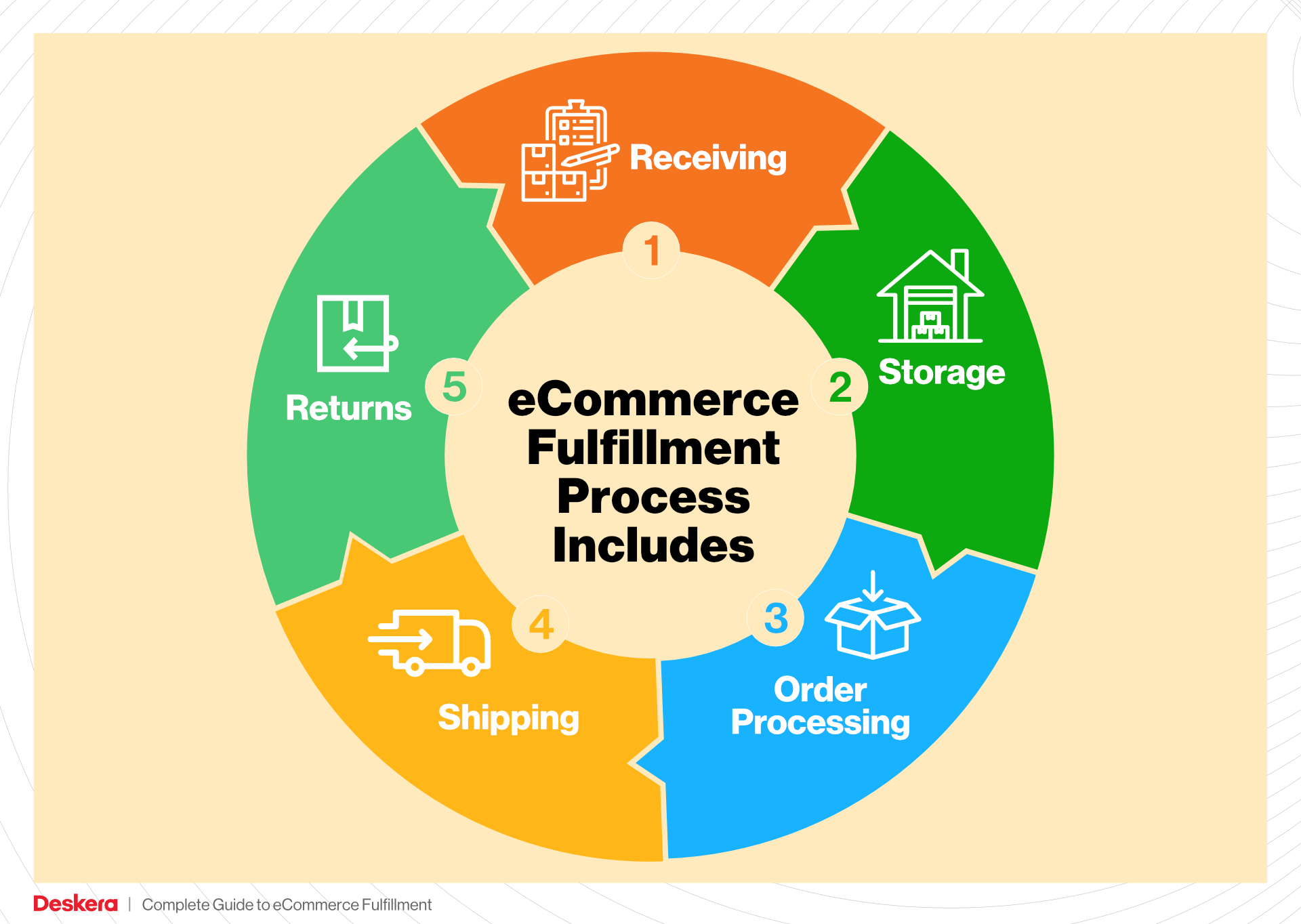
4. Order Packing
After items have been picked, the next step is order packing. This involves securely packaging the products to prevent damage during transit. Key considerations during this stage include the use of appropriate packing materials and the addition of packing slips, which provide essential information about the order for both the customer and the shipping carrier.
Order packing is critical for customer satisfaction and operational efficiency. Proper packing ensures that products arrive in good condition, which is essential for maintaining a positive brand reputation. Additionally, effective packing can reduce shipping costs by optimizing box sizes and minimizing wasted space. Businesses that invest in custom packing solutions can also enhance their branding through personalized packaging, creating a memorable unboxing experience for customers.
5. Shipping & Delivery
The final step in the order fulfillment process is shipping and delivery. Once orders are packed, they are labeled and handed over to shipping carriers for delivery. Key terms relevant to this stage include shipping methods, such as standard, expedited, or same-day delivery, which can significantly impact customer satisfaction.
Shipping and delivery are arguably the most critical components of the fulfillment process, as they determine how quickly and reliably customers receive their orders. In today’s competitive e-commerce landscape, fast and reliable shipping options can differentiate a business from its competitors. Moreover, offering features such as tracking information and hassle-free returns can enhance the overall customer experience, fostering loyalty and repeat business.
In conclusion, understanding and optimizing each step of the order fulfillment process—from receiving inventory to shipping and delivery—can significantly enhance operational efficiency and customer satisfaction. Businesses that invest in robust fulfillment strategies not only improve their bottom line but also build lasting relationships with their customers.
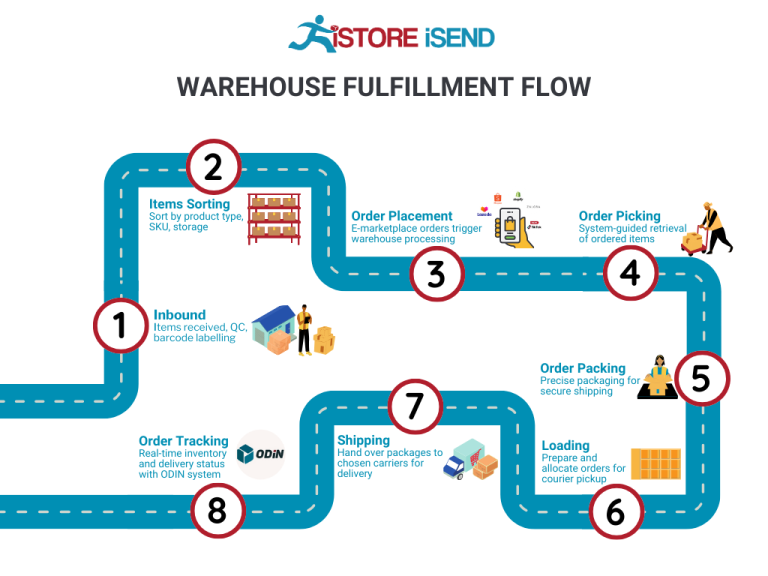
Comparing Fulfillment Models: In-House vs. 3PL vs. Dropshipping
Fulfillment Model Comparison Table
| Model | Who Handles Inventory | Best For (Business Stage) | Key Advantage | Key Disadvantage |
|---|---|---|---|---|
| In-House Fulfillment | Business owns and manages inventory | Established businesses with stable demand | Complete control over inventory and fulfillment process | High overhead costs and resource allocation |
| Third-Party Logistics (3PL) | 3PL provider manages inventory | Growing businesses looking to scale | Access to advanced logistics technology and expertise | Less control over fulfillment processes |
| Dropshipping | Supplier manages inventory | Startups and small businesses with limited capital | Low upfront investment and risk | Lower profit margins and potential stock issues |
In-House Fulfillment
In-house fulfillment involves managing the entire logistics process within the business. This model is best suited for established businesses that have a stable demand for their products. In-house fulfillment allows companies to maintain complete control over their inventory, packaging, and shipping processes. This level of control can lead to enhanced brand consistency and customer experience since businesses can tailor every aspect of fulfillment to their specific needs. Additionally, in-house fulfillment can result in cost savings over time, as businesses can negotiate shipping rates directly and avoid the fees associated with third-party providers.
However, this model comes with significant disadvantages. The initial setup for in-house fulfillment can be costly, requiring investment in warehouse space, inventory management systems, and labor. Additionally, as demand fluctuates, businesses may face challenges in scaling operations up or down efficiently. This can lead to overstocking or stockouts, both of which can negatively impact cash flow and customer satisfaction. Furthermore, the logistical complexities involved in managing returns and customer service can divert attention from core business activities.
Third-Party Logistics (3PL)
Third-party logistics (3PL) providers offer a comprehensive fulfillment solution by managing inventory, warehousing, and shipping on behalf of businesses. This model is ideal for growing companies that are looking to scale their operations without the overhead associated with in-house fulfillment. By partnering with a 3PL, businesses can leverage advanced logistics technology, experienced personnel, and established carrier relationships, which can lead to faster shipping times and cost savings.
One of the key advantages of using a 3PL is the ability to access sophisticated warehouse management systems (WMS) and analytics tools that provide real-time insights into inventory levels, order status, and fulfillment efficiency. This data-driven approach allows businesses to make informed decisions and optimize their operations for better performance. Additionally, 3PLs can handle complex logistics needs, such as international shipping and returns management, freeing up businesses to focus on growth and customer engagement.
On the downside, partnering with a 3PL means relinquishing some control over the fulfillment process. Businesses may find that they have less visibility into inventory management and order fulfillment timelines, which can lead to challenges in maintaining customer satisfaction. Furthermore, the fees associated with 3PL services can add up, particularly for smaller businesses that are just starting to scale. It’s crucial for businesses to choose a reliable 3PL partner to mitigate these risks and ensure a smooth fulfillment process.
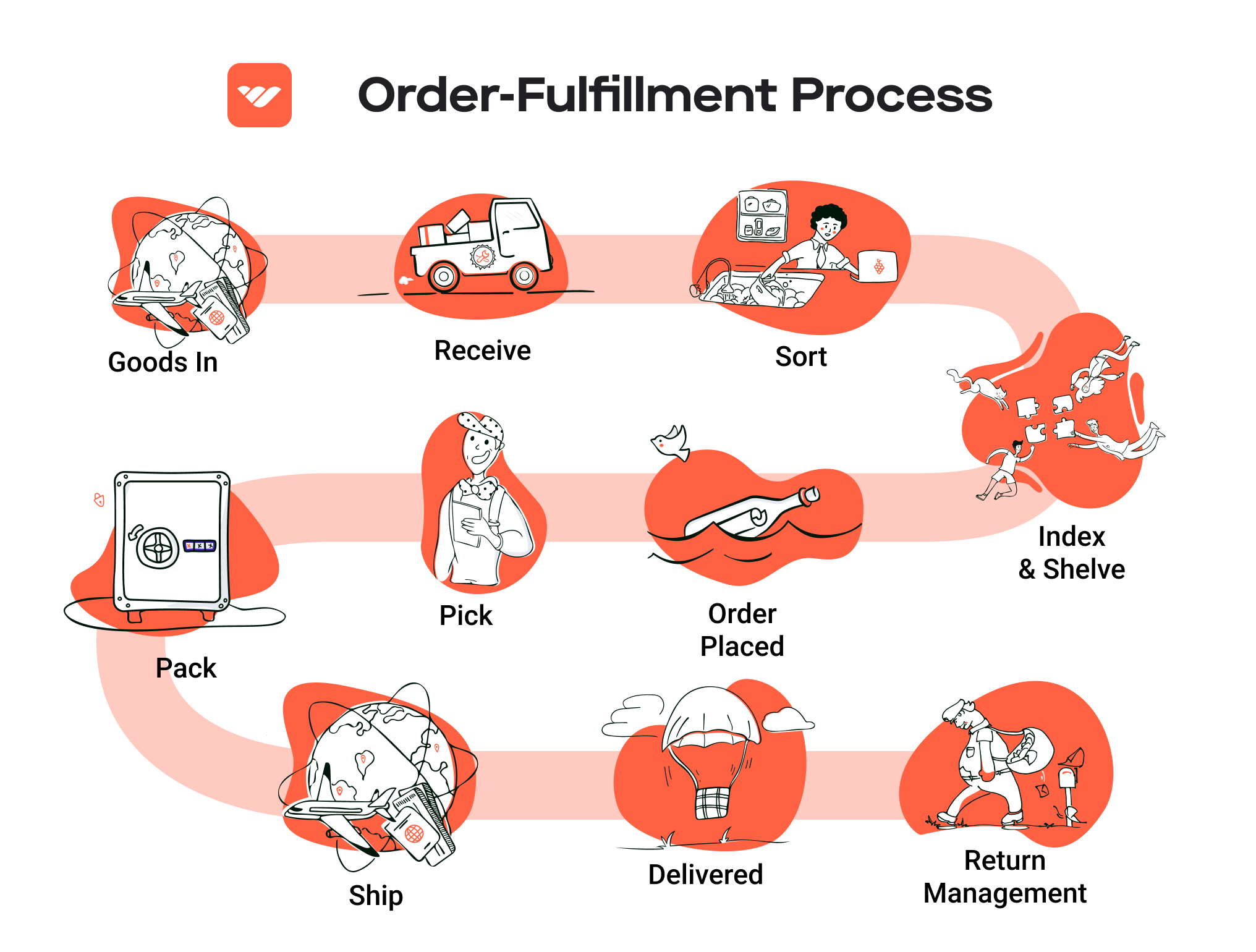
Dropshipping
Dropshipping is a fulfillment model where the retailer sells products without holding any inventory. Instead, when a customer places an order, the retailer purchases the item from a third-party supplier who then ships it directly to the customer. This model is particularly attractive to startups and small businesses with limited capital, as it requires minimal upfront investment and allows for a broader product offering without the risk of unsold inventory.
The primary advantage of dropshipping is its low risk and reduced operational overhead. Retailers can test new products and markets without the burden of inventory costs, making it easier to pivot and adapt to changing consumer preferences. Additionally, dropshipping allows businesses to scale quickly, as they can easily add new products to their offerings without the need for additional warehouse space or logistics.
However, dropshipping also presents significant challenges. Profit margins can be lower compared to other fulfillment models, as retailers often pay a premium for the convenience of not holding inventory. Additionally, reliance on suppliers for inventory management and shipping can lead to issues with stock availability and shipping times, which can negatively impact customer satisfaction. Furthermore, retailers have limited control over the fulfillment process, making it difficult to ensure consistent branding and quality in packaging. As a result, businesses must carefully vet their suppliers and establish clear communication channels to mitigate these challenges.
By understanding the strengths and weaknesses of each fulfillment model, e-commerce business owners can make informed decisions that align with their operational goals and growth strategies.
A Deep Dive into Amazon FBA: Pros, Cons, and Who It’s For
Understanding Fulfillment by Amazon (FBA)
Fulfillment by Amazon (FBA) is a logistics service provided by Amazon that enables sellers to store their products in Amazon’s fulfillment centers. Amazon takes care of storage, packaging, shipping, and customer service for these products. This model allows e-commerce businesses to leverage Amazon’s extensive distribution network and customer service capabilities, significantly enhancing their operational efficiency and market reach.
When a customer places an order for a product enrolled in FBA, Amazon handles the entire process, from picking the product off the shelf to packaging it and shipping it directly to the customer. Sellers can also benefit from Amazon’s customer service and return management, allowing them to focus on other aspects of their business.
How FBA Works
-
Sign Up and Set Up: Sellers create an Amazon seller account and opt into the FBA program. They then list their products and set them up for FBA, which involves preparing the items according to Amazon’s guidelines.
-
Ship Inventory: Sellers ship their products to Amazon’s fulfillment centers. This can be done in bulk, and Amazon provides specific guidelines regarding labeling and packaging to ensure efficient processing.
-
Storage: Once the products arrive at the fulfillment center, they are stored until sold. Amazon manages the inventory, keeping track of stock levels and notifying sellers when they need to replenish.
-
Order Processing: When a customer places an order, Amazon automatically picks, packs, and ships the product. Sellers can track orders through their Amazon seller account.
-
Customer Service and Returns: Amazon handles customer inquiries and returns for FBA products, providing sellers with valuable time to focus on growing their business.
Pros of Using FBA
1. Prime Eligibility
One of the most significant advantages of FBA is that products become eligible for Amazon Prime, which offers free two-day shipping to millions of customers. This can drastically increase sales as Prime members often prefer to buy items that qualify for this benefit.
2. Customer Trust
Amazon has established a reputation for reliability and quality service. By using FBA, sellers can leverage this trust. Customers are more likely to purchase from sellers who use FBA, knowing that they will receive their orders promptly and with excellent customer service.
3. Multi-Channel Fulfillment
FBA isn’t limited to Amazon sales alone. Sellers can use FBA to fulfill orders from other sales channels, such as their own e-commerce websites or other marketplaces. This flexibility allows sellers to streamline their logistics operations and manage inventory more efficiently.
4. Simplified Logistics
With FBA, sellers do not need to worry about the complexities of warehousing, packing, and shipping their products. Amazon’s extensive logistics infrastructure simplifies the fulfillment process, allowing sellers to focus on marketing and product development.
5. Scalability
FBA is designed to grow with your business. As sales increase, Amazon can handle the surge in order volume without requiring sellers to invest in additional warehouse space or staffing. This scalability is particularly beneficial for seasonal businesses or those experiencing rapid growth.
Cons of Using FBA
1. High Fees
While FBA offers many advantages, it comes with a cost. Sellers incur storage fees for their inventory, as well as fulfillment fees for each order processed. These fees can add up, especially for sellers with low-margin products or high inventory turnover.
2. Strict Inventory Rules
Amazon has stringent inventory management rules, including requirements for how products must be packaged and labeled. Sellers must also keep track of their inventory levels to avoid long-term storage fees, which can be a burden for those with fluctuating stock levels.
3. Commingling Risks
FBA uses a commingling inventory system, meaning that sellers’ products may be stored alongside those of other sellers. This can lead to concerns about product quality and fulfillment accuracy, as there is a risk of receiving items that do not match the seller’s standards.
4. Limited Control Over Branding
When using FBA, sellers have less control over the unboxing experience. Amazon manages packaging and shipping, which may not align with a seller’s branding or marketing strategy. This can dilute the brand experience for customers.
5. Dependence on Amazon
Relying on FBA means that sellers are subject to Amazon’s policies and algorithm changes. Any changes in Amazon’s fulfillment policies can impact sellers’ operations and profitability.
Who is FBA Best For?
FBA is an excellent option for small to medium-sized e-commerce businesses looking to scale their operations without investing heavily in logistics infrastructure. It is particularly beneficial for:
- New Sellers: Those starting in e-commerce can leverage Amazon’s established infrastructure and customer trust to gain traction quickly.
- High-Volume Sellers: Businesses with a steady flow of orders that can absorb the fees associated with FBA will find it cost-effective.
- Brands Seeking Exposure: Companies looking to reach a broader audience through Amazon’s platform and benefit from Prime membership will gain significant advantages.
- Multi-Channel Retailers: Businesses that sell across multiple platforms can streamline their logistics through FBA, making it easier to manage inventory and fulfillment across channels.
In conclusion, while FBA offers a robust solution for many e-commerce businesses, it is essential to weigh the pros and cons carefully. By understanding how FBA works and considering their unique business needs, sellers can determine whether this fulfillment model aligns with their growth strategy.
Core Services Offered by Fulfillment Centers
Inventory Management & Warehousing
Inventory management and warehousing form the backbone of efficient fulfillment operations. Fulfillment centers provide businesses with dedicated storage space for their products, ensuring that items are securely stored and readily accessible when needed.
What It Is: This service involves tracking inventory levels, managing stock replenishment, and organizing products within the warehouse. Advanced Warehouse Management Systems (WMS) allow businesses to have real-time visibility into their inventory, helping them make informed decisions about stock levels and orders.
Benefits: For e-commerce businesses, effective inventory management translates to reduced holding costs and minimized stockouts. By leveraging a fulfillment center’s expertise, companies can optimize their inventory turnover rates and reduce excess stock. Additionally, accurate inventory tracking helps businesses maintain customer satisfaction by ensuring that products are available when customers want them. This capability not only enhances operational efficiency but also contributes to better cash flow management.
Pick and Pack Services
Pick and pack services streamline the process of order fulfillment. This service involves selecting the right products from the warehouse (picking) and preparing them for shipment (packing).
What It Is: Once an order is placed, fulfillment centers utilize systematic processes to pick the correct items from their storage locations. After picking, products are carefully packed according to specific guidelines, often tailored to the brand’s requirements.
Benefits: The pick and pack process significantly reduces the time it takes to get orders out the door. For e-commerce businesses, speed is essential; customers expect prompt delivery. By outsourcing this function to a fulfillment center, businesses can ensure a high level of accuracy and speed in order processing. Many fulfillment centers report fulfillment accuracy rates exceeding 99%, which minimizes returns due to errors and enhances customer trust. Moreover, outsourcing these tasks allows e-commerce companies to focus on scaling their operations and improving marketing efforts rather than getting bogged down in logistics.
Kitting and Assembly
Kitting and assembly services involve the grouping of individual items into ready-to-ship sets or kits, which may include multiple products packaged together as a single unit.
What It Is: This process can involve assembling products, bundling items together for promotions, or creating gift sets. Fulfillment centers have the capability to handle various assembly tasks, ensuring that products are prepared according to specific customer or market needs.
Benefits: Kitting and assembly services offer significant advantages for e-commerce businesses aiming to enhance their product offerings. By providing customized kits or bundles, businesses can create unique value propositions that attract customers. For instance, bundling complementary products can increase average order values and improve customer satisfaction. Additionally, outsourcing this service can save businesses time and labor costs associated with in-house assembly, allowing them to redirect resources towards other growth initiatives. This flexibility is particularly beneficial during peak seasons or promotional periods when demand may surge unexpectedly.
Returns Management (Reverse Logistics)
Returns management, or reverse logistics, is a critical component of the fulfillment process that deals with the return of products from customers back to the seller.
What It Is: This service encompasses all activities related to processing returns, including receiving returned items, inspecting their condition, restocking, and managing any necessary refurbishments or disposals. Fulfillment centers can streamline this process to ensure that returns are handled efficiently and effectively.
Benefits: A robust returns management system is vital for maintaining customer satisfaction and loyalty. E-commerce businesses that offer hassle-free return policies are more likely to convert first-time buyers into repeat customers. By partnering with a fulfillment center that specializes in returns, businesses can reduce the time and costs associated with processing returns. Efficient handling of returns can also improve inventory management, as products can be quickly assessed and restocked if they are in good condition. Additionally, effective returns management can provide valuable insights into product quality and customer preferences, informing future business strategies and product offerings.
In conclusion, leveraging the core services offered by fulfillment centers not only enhances operational efficiency but also positions e-commerce businesses for sustainable growth. By focusing on inventory management, pick and pack services, kitting and assembly, and returns management, businesses can streamline their logistics processes, improve customer satisfaction, and ultimately drive higher sales.
How to Choose a Fulfillment Partner: A 6-Point Checklist
Location & Warehouse Network
Importance:
The geographic location of a fulfillment partner’s warehouses can significantly impact shipping times and costs. A partner with multiple fulfillment centers across the country can provide faster delivery to a wider customer base, which is crucial for meeting consumer expectations in today’s e-commerce landscape.
Questions to Ask:
1. How many fulfillment centers do you operate, and where are they located?
2. What is your average shipping time to major cities?
3. Do you have the capability to expand your warehouse network if needed?
4. How do you handle inventory distribution across multiple locations?
Technology & Integrations
Importance:
A robust technology platform is essential for seamless operations. This includes a warehouse management system (WMS) that integrates with your e-commerce platforms, allowing for real-time inventory tracking, order processing, and data analytics. Effective technology minimizes errors and enhances efficiency.
Questions to Ask:
1. What technology solutions do you offer for order management and inventory tracking?
2. How easily can your system integrate with my existing e-commerce platform (e.g., Shopify, WooCommerce)?
3. Do you provide real-time reporting and analytics? If so, what metrics can I track?
4. How do you handle system outages or technical issues?
Specializations (e.g., Cold Storage, Oversized Items)
Importance:
Different businesses have unique product requirements. If you sell perishable goods, oversized items, or products requiring special handling, it’s crucial to partner with a fulfillment provider that has the necessary capabilities and expertise.
Questions to Ask:
1. What types of products are you specialized in handling (e.g., cold storage, hazardous materials, oversized items)?
2. Do you have the necessary certifications or compliance measures for handling specialized products?
3. Can you provide case studies or references from similar businesses you’ve worked with?
4. How do you manage quality control for specialized products?
Scalability & Capacity
Importance:
As your business grows, your fulfillment needs will evolve. A good fulfillment partner should be able to scale operations alongside your business, whether you’re experiencing seasonal spikes in demand or planning for long-term growth.
Questions to Ask:
1. How do you handle seasonal demand fluctuations?
2. What is your capacity for handling increased order volumes?
3. Can you provide examples of how you’ve scaled for other clients?
4. Are there any limits to the number of SKUs you can manage?
Pricing and Contracts
Importance:
Understanding the pricing structure and contract terms is vital for maintaining profitability. Look for transparency in pricing, including hidden fees for storage, shipping, and returns. A flexible contract can also protect your business from long-term commitments that may not serve your interests as your needs change.
Questions to Ask:
1. Can you provide a detailed breakdown of your pricing structure, including shipping, storage, and handling fees?
2. Are there any hidden costs I should be aware of?
3. What are the terms for contract renewal or termination?
4. Do you offer volume discounts or flexible pricing options for growing businesses?
Customer Support & Reviews
Importance:
Excellent customer support is crucial for resolving issues quickly and efficiently. A partner who provides dedicated account management and responsive support will help maintain smooth operations and address any challenges that arise. Additionally, reviews and testimonials can provide insight into a partner’s reliability and service quality.
Questions to Ask:
1. What level of customer support do you offer? Will I have a dedicated account manager?
2. How do you handle customer inquiries and issues?
3. Can you provide references or case studies from your current clients?
4. What is your process for managing complaints or service failures?
Conclusion
Choosing the right fulfillment partner is a critical decision that can impact your business’s efficiency, customer satisfaction, and overall growth. By using this checklist, e-commerce business owners, operations managers, and entrepreneurs can systematically evaluate potential partners based on key criteria that align with their unique needs. Always remember to conduct thorough research and due diligence to ensure that your fulfillment partner can not only meet your current requirements but also grow with you in the future.
Understanding Fulfillment Pricing: A Breakdown of Common Fees
Initial Setup Fees
Initial setup fees are one-time charges incurred when you first establish a relationship with a fulfillment provider. These fees cover the costs associated with onboarding your business onto their systems and preparing your products for storage and distribution. The setup process often includes integrating your e-commerce platform with the fulfillment provider’s warehouse management system (WMS), creating product listings, and setting up inventory tracking.
The calculation of initial setup fees can vary significantly based on the complexity of your inventory and the specific services you require. Some fulfillment centers may charge a flat fee for setup, while others may base it on the number of SKUs (Stock Keeping Units) you have. It’s crucial to clarify what services are included in the setup fee to avoid unexpected costs.
Receiving Fees
Receiving fees are charged when your products arrive at the fulfillment center. These fees cover the labor and processes required to unload, inspect, and catalog your inventory into the system. Typically, receiving fees are charged per pallet or per item, depending on the fulfillment provider’s policies.
The calculation of receiving fees can depend on several factors, including:
- Volume of Inventory: Larger shipments may receive discounted rates.
- Condition of Goods: If items require additional handling, such as repackaging or inspection, this can increase the receiving fee.
- Special Requirements: Some products may need specialized handling, which could incur additional costs.
Understanding how receiving fees are structured will help you budget accordingly and avoid surprises when your inventory arrives at the warehouse.
Storage Fees (per pallet/bin)
Storage fees are recurring charges for the space your inventory occupies within the fulfillment center. These fees can be calculated on a monthly basis and are typically based on the volume of space your products consume, measured in pallets or bins.
There are a few key considerations when it comes to storage fees:
- Type of Storage: Different fulfillment centers may offer various storage options, including standard, climate-controlled, or hazardous material storage, each with its own pricing structure.
- Duration of Storage: Some providers may have tiered pricing based on the length of time your inventory is stored. For example, you might pay a lower rate for the first few months, with costs increasing if items remain in storage longer than a specified period.
- Overstock or Slow-Moving Items: If you have products that do not sell quickly, some fulfillment centers may impose additional fees for overstock or long-term storage to encourage faster turnover.
Being aware of how storage fees are calculated can help you manage your inventory levels more effectively and minimize costs.
Pick & Pack Fees (per item/order)
Pick and pack fees are charged for the labor involved in retrieving items from storage and preparing them for shipment. This fee typically covers picking the products, packing them into boxes, and labeling them for delivery. The calculation of these fees can vary based on several factors:
- Number of Items: Many fulfillment centers charge a per-item fee, meaning the more items in an order, the higher the fee.
- Order Complexity: If an order requires special handling, such as assembling items or custom packaging, the pick and pack fees may increase.
- Frequency of Orders: Some providers may offer volume discounts for businesses with high order frequencies or large-scale operations.
Understanding how pick and pack fees are structured will enable you to optimize your order fulfillment processes and manage costs more effectively.
Shipping Fees
Shipping fees are among the most significant costs in fulfillment pricing. These fees cover the actual shipping costs incurred to deliver packages to customers. The calculation of shipping fees is influenced by several factors:
- Shipping Carrier: Different carriers offer varying rates, which can be negotiated based on your fulfillment provider’s partnerships.
- Package Weight and Dimensions: Heavier and larger packages typically incur higher shipping fees. It’s essential to accurately measure and weigh items to avoid unexpected surcharges.
- Shipping Speed: Options for expedited shipping usually come at a premium compared to standard ground shipping rates.
- Destination: Shipping to remote locations or international destinations may incur additional fees.
To get the best shipping rates, it’s advisable to discuss options with your fulfillment provider and consider a shipping strategy that balances cost and delivery speed.
Tips for Getting an Accurate Quote
-
Provide Detailed Inventory Information: Be clear about the types and quantities of products you need to store and fulfill. This will help the provider give you an accurate estimate.
-
Ask About All Fees: Ensure you understand all potential fees, including those for storage, receiving, and additional services. Request a breakdown of costs to avoid surprises.
-
Discuss Volume Discounts: If you anticipate high order volumes, inquire about potential discounts for bulk shipping or storage.
-
Evaluate Service Options: Consider whether you need additional services like kitting, custom packaging, or returns management, as these can impact your overall costs.
-
Compare Multiple Providers: Don’t settle for the first quote. Comparing offers from different fulfillment partners can help you find the best pricing structure that meets your business needs.
By understanding these common fulfillment pricing models and following these tips, you can make informed decisions that will aid in scaling your e-commerce business effectively.
Frequently Asked Questions (FAQs) about Fulfillment
1. What is pnd fulfillment?
pnd fulfillment refers to the process of managing and executing the logistics of receiving, processing, and delivering orders for e-commerce businesses. This includes inventory management, order picking and packing, shipping, and handling returns. It aims to ensure that customers receive their products in a timely and efficient manner, enhancing customer satisfaction and loyalty.
2. What’s the difference between a warehouse and a fulfillment center?
A warehouse is primarily a storage facility where goods are kept until they are needed. In contrast, a fulfillment center is a specialized facility that not only stores products but also handles the entire order fulfillment process. This includes receiving orders, picking and packing items, shipping them to customers, and managing returns. Fulfillment centers are designed to optimize the speed and efficiency of order processing.
3. What is a 3PL?
A 3PL, or third-party logistics provider, is a company that offers outsourced logistics services to businesses. These services can include warehousing, inventory management, order fulfillment, shipping, and returns processing. Partnering with a 3PL allows e-commerce businesses to leverage specialized expertise and resources, enabling them to scale operations without the overhead of managing logistics in-house.
4. How much do fulfillment services cost?
The cost of fulfillment services can vary significantly based on several factors, including order volume, storage space required, shipping methods, and additional services such as kitting or custom packaging. Typically, fulfillment providers charge a combination of per-order fees, storage fees, and shipping costs. It’s essential to request quotes from multiple providers to compare pricing structures and find the best fit for your business needs.
5. How do I choose a fulfillment partner?
When selecting a fulfillment partner, consider factors such as their experience in your industry, service offerings, technology and integration capabilities, scalability, and customer support. Look for a provider that offers a seamless onboarding process, transparent reporting, and a strong track record of meeting delivery expectations. Additionally, evaluate their shipping options and costs to ensure they align with your business goals.
6. What are value-added services (VAS) in fulfillment?
Value-added services (VAS) are additional services offered by fulfillment providers that enhance the overall order fulfillment process. These can include custom packing, labeling, bundling products, gift messaging, and returns management. VAS can help differentiate your brand and improve customer satisfaction by offering personalized touches and efficient handling of orders.
7. How does technology play a role in fulfillment?
Technology plays a crucial role in modern fulfillment operations. Advanced Warehouse Management Systems (WMS) enable real-time tracking of inventory levels, order processing, and shipping. Integration with e-commerce platforms and CRMs allows for seamless data synchronization, improving operational efficiency. Additionally, reporting and analytics tools provide insights into performance metrics, helping businesses make informed decisions to enhance their fulfillment strategy.
8. What is the importance of shipping speed in fulfillment?
Shipping speed is a critical factor in customer satisfaction and can significantly impact sales. Fast shipping options, such as same-day or 2-day delivery, can enhance the customer experience and encourage repeat purchases. Research indicates that consumers often prioritize shipping speed when making online purchases, making it essential for e-commerce businesses to partner with fulfillment providers that can meet these expectations.
9. How can I manage returns effectively in fulfillment?
Effective returns management is essential for maintaining customer loyalty. A streamlined return process should include clear instructions for customers, easy-to-use return labels, and prompt processing of returned items. Partnering with a fulfillment provider that specializes in returns can help ensure that the process is efficient and cost-effective, ultimately enhancing the customer experience and minimizing losses.
10. What should I know about international fulfillment?
International fulfillment involves additional complexities, such as customs regulations, international shipping costs, and varying delivery times. It’s important to partner with a fulfillment provider that has experience in international logistics and can navigate these challenges. Considerations such as local warehousing, customs documentation, and shipping carrier options can significantly influence your ability to serve international customers effectively.
Conclusion: Is Outsourcing Fulfillment the Right Move for Your Business?
Assessing the Benefits of Outsourcing Fulfillment
Outsourcing your fulfillment can be a game-changer for your e-commerce business, offering a multitude of advantages that can significantly enhance your operational efficiency and customer satisfaction. First and foremost, partnering with a specialized fulfillment service allows you to save precious time. By delegating order processing, inventory management, and shipping logistics to experts, you free up your internal resources to focus on strategic growth initiatives, product development, and marketing efforts.
Moreover, scalability is a critical factor in today’s fast-paced e-commerce environment. As your business grows, so do your fulfillment needs. A reliable third-party logistics (3PL) provider can seamlessly accommodate fluctuations in order volume, enabling you to scale operations without the headaches of managing warehouse space or hiring additional staff. This flexibility is essential for businesses looking to capitalize on seasonal peaks or unexpected surges in demand.
Additionally, leveraging the expertise of a fulfillment partner can significantly enhance your operational capabilities. Established providers come equipped with advanced warehouse management systems and industry best practices, ensuring high accuracy rates, timely deliveries, and superior customer service. Their knowledge of logistics can help you navigate complex shipping regulations and optimize your supply chain processes.
Choosing the Right Partner for Growth
However, the benefits of outsourcing fulfillment hinge on selecting the right partner. It’s crucial to evaluate potential providers based on their technology, service offerings, and customer support to ensure they align with your business goals. A strategic partner will not only help you meet customer expectations but will also support your long-term growth strategy.
Take Action Today
To determine if outsourcing fulfillment is the right move for your business, consider conducting an audit of your current shipping process. Identify areas where you are facing challenges or inefficiencies. This assessment will provide clarity on whether a fulfillment partner could enhance your operations and ultimately contribute to your success. Don’t hesitate to explore your options—your growth journey may depend on it.
Important Disclaimer
⚠️ Important Disclaimer
The information in this guide is for educational purposes. Fulfillment services, pricing, and platform features change frequently. Always conduct your own due diligence and consult with providers directly before making business decisions.
